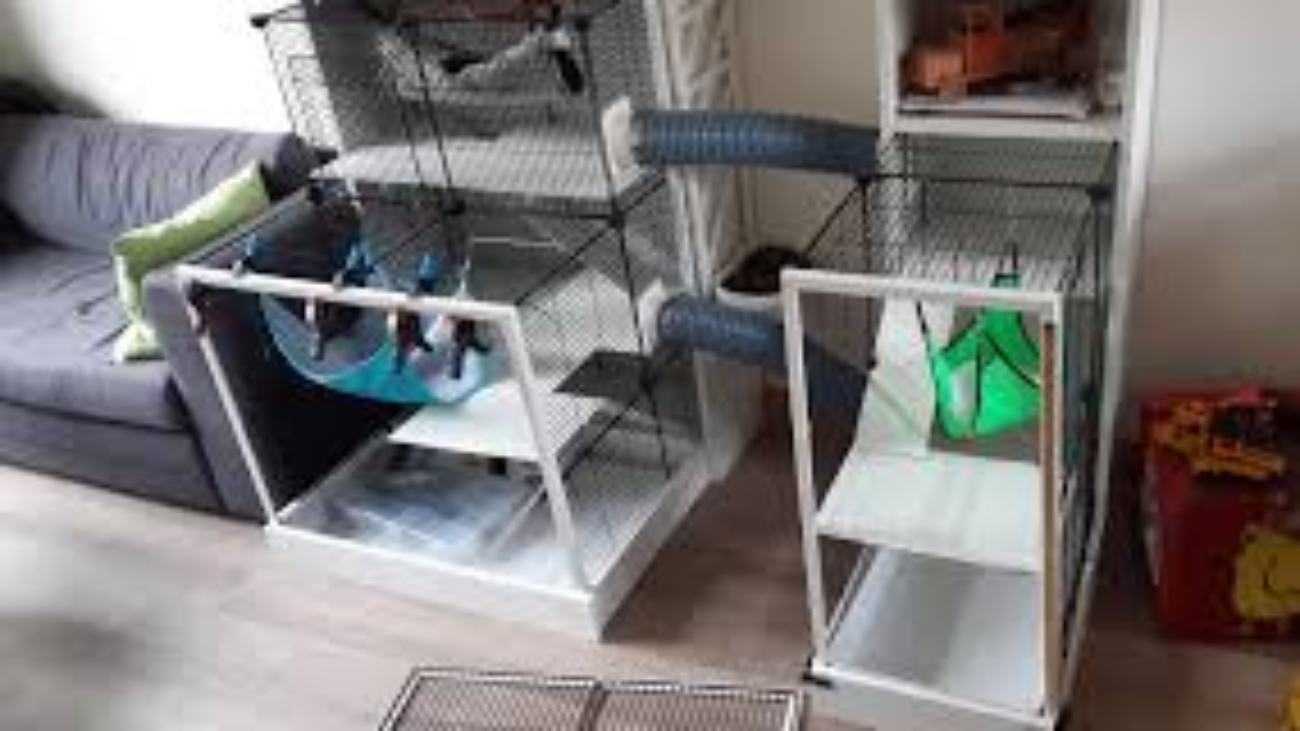Ferret And cage, Ferrets are playful, curious, and intelligent pets that bring joy and excitement to any household. Ensuring they have a safe, comfortable, and stimulating environment is crucial for their health and well-being. This article will guide you through everything you need to know about choosing and setting up the perfect cage for your ferret.
Choosing the Right Cage
When selecting a cage for your ferret, consider the following factors:
- Size: Ferrets are active animals that need plenty of space to explore and play. The minimum recommended cage size for a single ferret is 24 inches wide, 24 inches deep, and 18 inches high. However, larger is always better. Multi-level cages with ramps and platforms can provide additional space and enrichment.
- Bar Spacing: The bars of the cage should be close enough together to prevent your ferret from escaping or getting stuck. A spacing of 1 inch or less is ideal.
- Materials: Look for cages made of sturdy, non-toxic materials. Powder-coated metal cages are durable and easy to clean. Avoid cages with wooden parts, as ferrets can chew through them.
- Accessibility: Ensure the cage has large doors for easy access. This will make cleaning and interacting with your ferret more convenient.
Setting Up the Cage
Once you’ve chosen the right cage, it’s time to set it up. Here’s what you’ll need:
- Bedding: Line the bottom of the cage with a soft, absorbent bedding. Avoid cedar or pine shavings, as these can be harmful to ferrets. Fleece liners or recycled paper bedding are good options.
- Litter Box: Place a litter box in one corner of the cage. Ferrets can be litter trained, and having a designated spot for waste helps keep the cage clean. Use a dust-free, ferret-safe litter.
- Hideouts and Hammocks: Ferrets love to hide and sleep in cozy, enclosed spaces. Provide several hideouts, such as small boxes, tunnels, and hammocks. Hammocks can be hung at various levels in the cage to maximize space.
- Toys and Enrichment: Ferrets need mental and physical stimulation. Include a variety of toys, such as balls, tunnels, and chew toys. Rotate toys regularly to keep your ferret engaged.
- Food and Water: Use heavy, tip-proof bowls for food and water, or consider a water bottle designed for small animals. Ensure fresh water is always available.
Maintaining the Cage
Keeping the cage clean is essential for your ferret’s health. Follow these maintenance tips:
- Daily Cleaning: Remove uneaten food, change the water, and spot-clean any soiled bedding. Scoop the litter box daily.
- Weekly Cleaning: Once a week, remove all bedding, toys, and accessories. Clean the cage with a mild, pet-safe disinfectant. Wash bedding and soft toys.
- Monthly Deep Clean: Perform a thorough cleaning of the entire cage, including all accessories. Check for any signs of wear or damage and replace items as needed.
Providing Out-of-Cage Time
While a well-set-up cage is important, ferrets also need time outside the cage to explore and play. Aim to give your ferret at least 2-4 hours of supervised playtime outside the cage each day. This helps satisfy their natural curiosity and provides much-needed exercise.
Conclusion
Creating the perfect home for your ferret involves choosing the right cage, setting it up thoughtfully, and maintaining it regularly. By providing a safe, comfortable, and stimulating environment, you can ensure your ferret remains healthy and happy. Remember, a well-cared-for ferret is a delightful companion that will bring endless joy to your life.

